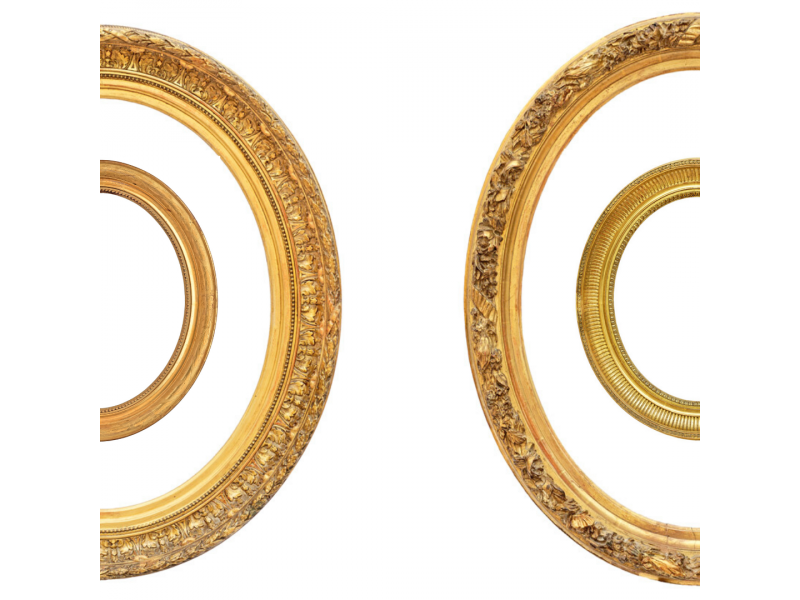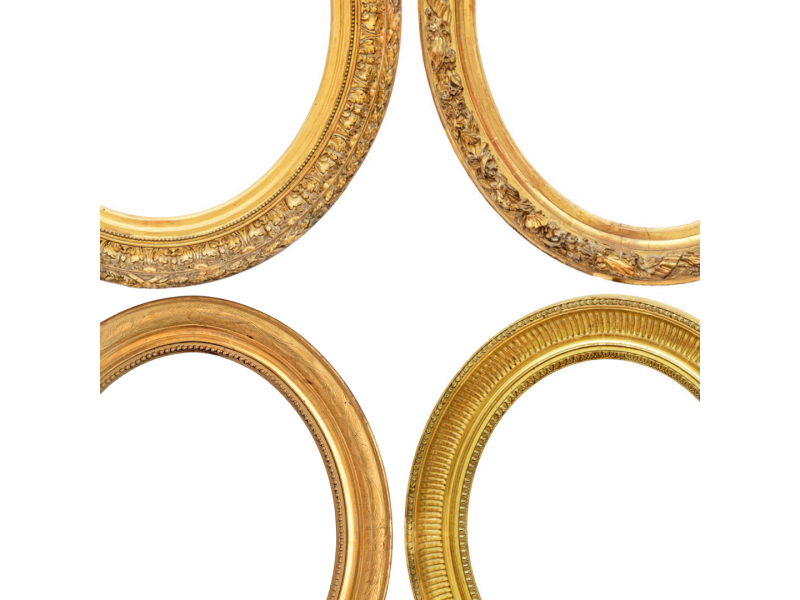In the 16th century, the discovery of a new technique made it possible to work with wood to obtain oval or round shapes inherited from the tondo, a circular painting of the Italian Renaissance. These new frames often go in pairs and are preferred for framing portraits. Indeed, the oval shape directs the viewer's gaze to the center of the image, where the face is usually located.

In France, oval frames experienced a great boom in the 18th century, in close connection with the development of ceremonial decoration. To compensate for the simplicity imposed by the oval shape, these frames are first decorated with garlands, volutes, or topped with cartouches or macaroons, in an extravagance characteristic of the rococo style. The decoration of these frames will, however, follow the general evolution of taste and styles, and gradually tend towards more regular lines. Their ornamental vocabulary remains however dominated by vegetal and delicate forms, which easily find their place in the decoration of bourgeois interiors without overwhelming the subject of the painting.
In the middle of the 19th century, the invention of photography and its growing success among the bourgeoisie did not dethrone the oval frame as the preferred frame for portraits, quite the contrary. The setting evolves and comes in smaller and more intimate formats. Finally, bronze and brass sometimes replace gilded wood.
